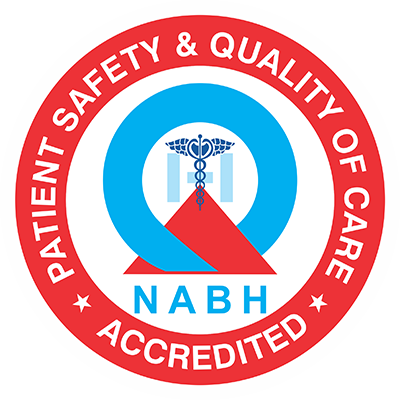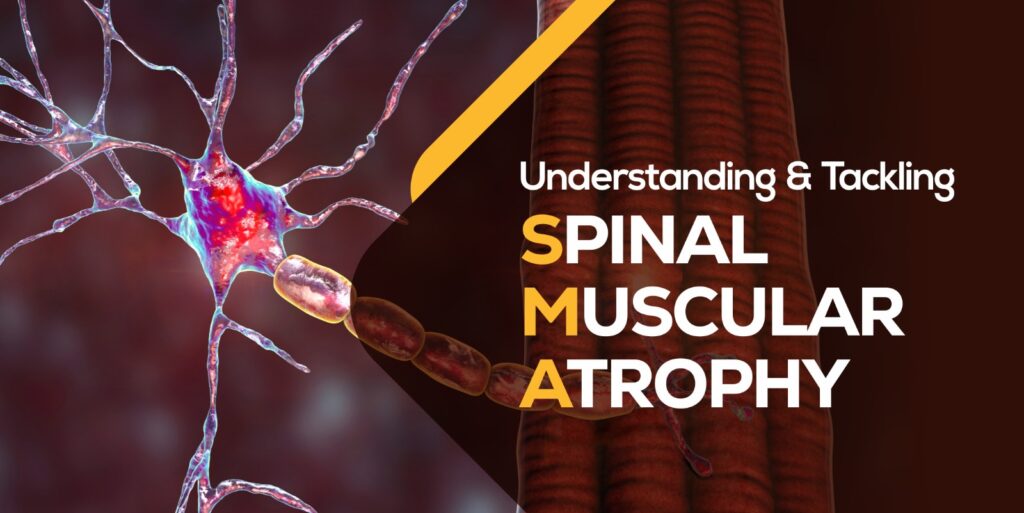Spinal Muscular Atrophy (SMA) is a genetic disorder that affects the nervous system and voluntary muscle movement. Shocking, but it’s a fact that SMA is the leading genetic cause of infant mortality, affecting about 1 in 10,000 babies born worldwide. Despite its severity, recent advancements in diagnosis and treatment have brought new hope to affected families.
What causes Spinal Muscular Atrophy?
SMA is caused by a genetic defect in the SMN1 gene, which is responsible for the production of a protein essential for the survival of motor neurons. Without sufficient levels of this protein, motor neurons die, leading to muscle weakness and atrophy. The condition is inherited in an autosomal recessive pattern, meaning a child must inherit two copies of the mutated gene, one from each parent, to develop the disease.
Symptoms to watch out for
The symptoms of SMA vary widely depending on the type (ranging from Type 1 to Type 4), but they generally include:
- muscle weakness
- reduced muscle tone
- difficulties with movement, breathing, & swallowing
Type 1 SMA is the most severe and evident at birth or in the first few months of life. In contrast, symptoms of Types 3 and 4 can appear in adolescence or adulthood and tend to progress more slowly.
However, early diagnosis, intervention and physical therapies can significantly enhance the quality of life and increase longevity in SMA patients.
Diagnosing SMA
Early diagnosis is critical in managing SMA. Genetic testing is the most reliable method for diagnosing SMA, detecting mutations in the SMN1 gene. Other diagnostic tools include Electromyography (EMG) to assess the health of muscles & nerve cells, and Muscle Biopsies, which, although less common, can help rule out other conditions.
Treatment options
Treatment for Spinal Muscular Atrophy (SMA) in India has seen significant advancements recently, paralleling global medical progress. The Central Drugs Standard Control Organization (CDSCO), India’s regulatory authority equivalent to the USFDA, has approved groundbreaking treatments that can significantly alter the course of the disease.
Medical intervention – Medicines to enhance the production of the survival motor neuron (SMN) protein from a secondary gene, help to compensate for the dysfunctional primary gene.
Gene therapy – It introduces a new copy of the SMN1 gene directly into motor neurons using a viral vector. This treatment has been a game changer, especially for younger patients with SMA, by potentially halting disease progression and improving motor functions.
With the availability of these treatments, the outlook for SMA patients in India continues to improve, aligning with some of the most advanced care available worldwide.
Though not cures, these treatment modes can significantly slow disease progression and improve motor function. Furthermore, supportive treatments like physical therapy, respiratory therapy, and nutritional support help substantially in managing symptoms and improving quality of life for SMA patients.
In Hyderabad, India, the team at BBR Hospitals understands the complexities of Spinal Muscular Atrophy and the profound impact it has on patients and their families. Their dedicated SMA care team includes genetic counselors, neurologists, pulmonologists, and physical therapists who specialise in neuromuscular disorders. BBR Hospitals is equipped with state-of-the-art technology and facilities to administer advanced SMA treatments. The hospital’s comprehensive care approach ensures that each aspect of SMA, from diagnosis through long-term treatment planning, is managed attentively and compassionately. The team also empowers patients and their families through education and support services, helping them lead fuller, more active lives despite the challenges of Spinal Muscular Atrophy.



